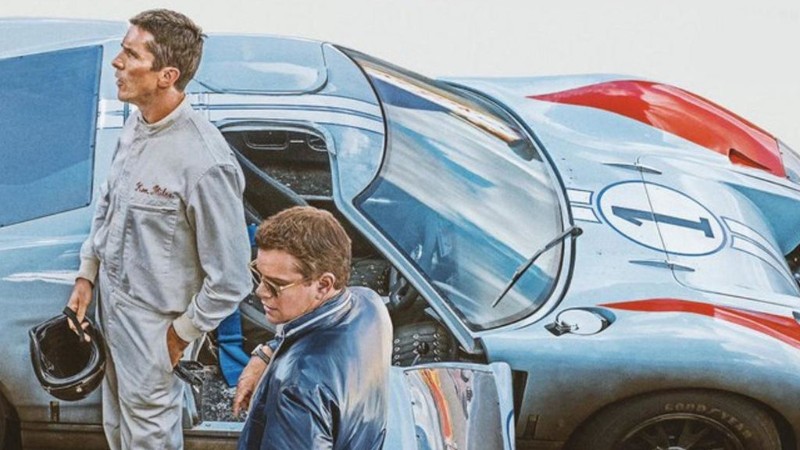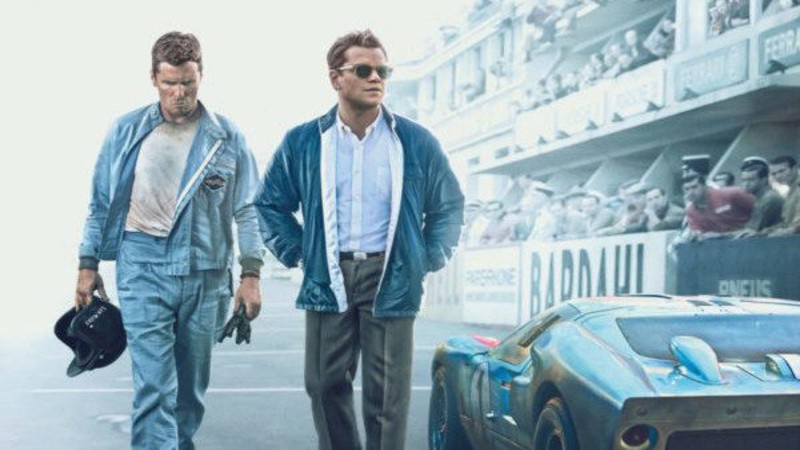=You have never seen a geriatric hero this supple and nimble. Eighty-year-old Harrison Ford (whose character is in reality 10 years younger) controls his whip to perfection, disarming enemies, climbing crumbling walls, diving into the depths of the Aegean Sea and even riding on horseback inside the New York subway (yes, you read that right) with the agility of a 20-year-old (and the charming, wrinkly looks of Leonard Cohen in his final years). Your adrenaline will skyrocket for 142 minutes as you follow the final adventures of Dr Henry Jones, one of Hollywood’s favourite good guys ever.
The story starts during at the end of World War II, when Hitler is in his bunker and Berlin is in rubbles, in some sort of informal prologue lasting about 20 minutes. Indy and his acolyte Basil (Toby Jones) fend off Nazis in order to protect half of the titular Dial. The device was concocted by Greek mathematician Archimedes and allegedly creates “fissures in time”, thereby allowing time travel. The make-up (presumably combined with CGI) is impressive, with Ford’s character looking like a handsome man in his 40s (the age of his character in 1945).
Fast-forward a quarter of a century. The year is 1969 and we are now in New York. Basil’s daughter Helena (Phoebe Mary Waller-Bridge) visits Professor Jones, who also happens to be her godfather. He is about to go into retirement and has little desire to embark on a late-life archeological adventure. Wombat (Helena’s nickname) insists otherwise, sharing the extensive knowledge that she acquired from her late father with the old man. The US government has recruited former Nazi officers in order to help them beat the Soviet Union in the space race. Jones and Wombat are trapped and nearly killed just as the Apollo 11 lands on the moon, and garrulous Americans protest against the Vietnam War. Jones and Wombat storm through the crowds and underground tunnels, and then travel to Tangier (Morocco). They are joined by a young Moroccan boy called Teddy (Ethann Isidore), with handy driving and pickpocketing skills. This is where they begin to pierce together the many puzzle pieces that will lead them to the other half of the Dial.
Next their quest leads them to Greece. They dive into the Aegean Sea in order to recover a relic containing coded instructions on to how to reach the item that will allow them to go back to the past. Their following stop is Syracuse, Italy. The Nazis, led by Jürgen Voller (Mads Mikkelsen), closely follow their footsteps. The villains repeatedly ensnare the trio, who every time somehow manage to free themselves from the persistent miscreants. Jürgen wishes to time travel himself and change the course of history. Presumably he wants to ensure Hitler wins World War 2? Or does he have more self-aggrandising ambitions?
Helena is a duplicitous unreliable sidekick. She is more concerned with money than with Indy’s wellbeing, at one point leaving him to perish in hands of the enemy. Her ambitions are purely pecuniary: she wants to sell the ancient artefact and live comfortably thereafter. Yet she is somehow likeable. Jones suspects that she has a more noble ulterior motif. She insists that she is plain greedy, in an overt endorsement of unhinged capitalism. Is it possible to be cash-driven and virtuous at once? Wombat embodies this very modern dilemma.
The only Indiana Jones film not directed by Steven Spielberg (but James mangold instead) has all the trademarks of a franchise so influential that it became a movie genre per se (sitting somewhere between action and fantasy). Cliches and stereotypes of all sorts in the never-ending battle of good versus evil. Extensive fight scenes and numerous deaths with little to no blood. Countless car chases. A complex treasure hunt blending real historical facts with made-up fantasy. A female sidekick (in this case also a child one, however not as charismatic as Temple of Doom‘s (1984) Short Round, played by Jonathan Ke Quan). Travel to faraway places (in this case geographic travel extends to time travel: then film starts in 1945, on to 1969 and then… well, I’ll spare you the spoilers). In fact, The Dial of Destiny time travels through the history of mankind but also through the history of the 40-year old franchise. Exuberant mise-en-scene and cinematography, with fantastic cave, forest and urban settings (the street scenes of New York, Tangier and Syracuse are splendid). And a riveting music score firmly etched upon the history of cinema. The theme composed by John Williams is instantly recognisable to anyone born in the past few decades, perhaps second only to Bernard Herrmann’s unnerving strings in Alfred Hitchcock’s Psycho (1960). The biggest difference between Mangold and Spielberg is in the final denouement. Mangold opts for a more subtle psychological climax instead of the visually spectacular purge of the villain (such as the melting faces of Raiders of the Lost Ark, or the bridge fight followed by alligator feast in Temple of Doom). A fitting closure to a filmic adventure that took 42 years to complete.
Indiana Jones and the Dial of Destiny premiered at the 76th edition of the Cannes Film Festival, when this piece was originally written. Getting a ticket to watch the movie was an epic adventure with twists and turns not dissimilar to the ones in the film. Press tickets for the only two screenings were sold out within a few seconds of being made available. That’s because the Festival has a unapologetically hierarchical badge colour scheme, with preference given to professionals from more eminent media. I sit at the bottom of such ranking. This means that I had to keep checking online as often as I could as new tickets were gradually released. Tens of times a day for four days. In the morning of the first screening (which started at 8:30 in the morning), I was miraculously given a ticket as I repeatedly refreshed the booking system while also walking from my hotel to the Festival. I was elated. I felt like a true warrior, a genuine Indiana Jones. I arrived at the cinema an hour before the screening (at 7:30 in the morning) and joined the enormous queue of ticket holders. I walked past a 300-metre line of badge holders hoping to get in without a ticket (in case there were seat lefts). The rationale behind ticket allocation at Cannes is as complex and elusive as the darkest riddle Indiana Jones ever encountered. I strutted past those losers with a haughty grin. Victory. I triumphed where so many fellow journalists stumbled. For a few moments, I was a proud bearer of this year’s hottest ticket in Cannes.
Part 2 of my ticket saga. Something even stranger happened while I was waiting to enter the sumptuous Grand Theatre Lumiere. My electronic ticket simply vanished from my electronic purse. Gone. Weg. Disparu! No explanation whatsoever. Was this Indiana Jones had been tricked by a Nazi booking system? I panicked. Fortunately, not all was lost. Suddenly, I remembered that I had taken a screenshot of the ticket just moments earlier (and sent it to our writer Eoghan Lyng just to make him jealous). Phew. I was safe after all. But what if they found out that my ticket was a screenshot and accused me of cheating? I went from hero to villain. I felt like a real criminal except that I hadn’t been dishonest at all. It was the Festival that was cheating on me by mysteriously deleting my ticket for no apparent reason.
So what happened in the end? One, two, three… tah dah… I successfully walked past security. Their scanner was satisfied with the QR code on the screenshot! I did not fall into the villainous trappings of destiny. Happy ending after all. What an adventure. Vraiment encroyable!
Indiana Jones and the Dial of Destiny is in cinemas across the UK on Wednesday, June 28th.










